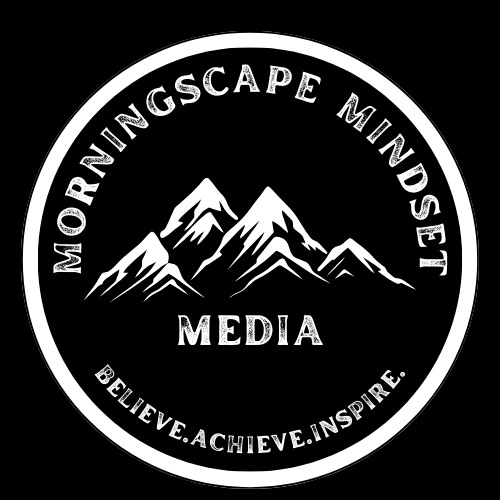Disclosure:
Thank you for reading this post, don't forget to subscribe!
Some of the links on this website are affiliate links. This means that if you click on the link and make a purchase, we may receive a small commission at no extra cost to you. Your support helps us keep the site running.Learn more on my Privacy Policy and Affiliate Disclosure page. Thank you for your support!

Building muscle isn’t just a game of lifting heavy weights. It involves understanding the science and mechanics of muscle growth, which is often called hypertrophy. When you lift weights, you create tiny microtears in your muscle fibers. Your body repairs these tears during rest, making muscles larger and stronger.
Several factors influence muscle growth. Genetics play a role in how easily you gain muscle. Some people are naturally more inclined to develop muscle, while others may need to work harder. Nutrition is key, as your muscles need the right fuel to grow. That means getting enough protein, carbs, and fats. Training intensity and volume are also crucial – you’ve got to push your muscles hard enough to trigger growth.
There’s a big difference between building muscle size (hypertrophy) and building muscle strength. Hypertrophy focuses on increasing the size of muscle fibers, while strength training focuses on improving the force muscles can produce. Both are important, but the approach and techniques can vary.
related article: Building better muscle-These strategies can help maintain more muscle as you age.
Rest and recovery are often underestimated but are just as important as the workout itself. During rest, your body repairs muscle fibers and builds them back stronger. Without proper rest and recovery, you risk overtraining and injury, which can set you back from your goals. So, don’t skip those rest days and make sure to get a good night’s sleep.
Crafting an Effective Strength Training Routine
Goals are your map in the journey of strength training. Setting clear and specific goals helps you stay focused and on track. Whether you aim for lifting heavier weights or achieving a certain physique, knowing your endgame gives purpose to every rep.
When it comes to exercises, not all are created equal. Compound exercises like squats, deadlifts, and bench presses work multiple muscle groups at once, making them incredibly efficient. Isolation exercises, targeting a single muscle group like bicep curls, are great for addressing weaknesses and sculpting specific muscles.
learn more about: The Ultimate Beginner’s Guide To Bodybuilding – A helpful resource for beginners looking to increase muscle mass.
Progressive overload is the magic behind muscle growth. Simply put, you need to gradually increase the weight, frequency, or intensity of your workouts. Your muscles adapt to the stress placed on them, so consistently challenging them is the way to keep growing stronger and bigger.
Structuring your workouts properly is crucial. Train each muscle group at least twice a week for optimal growth. Balancing workout frequency, volume, and intensity helps prevent overtraining while ensuring you’re giving enough stimulus for muscle growth. Create a plan that fits your lifestyle, whether it’s three times a week or six – consistency is what matters most.
Stay Ahead with Morningscape Mindset Media!
Sign up now to receive exclusive updates on our latest posts — delivered directly to your inbox!
Nutrition for Muscle Building
Getting your diet right is half the battle in building muscle. Your body needs the right fuel to grow, and that starts with macronutrients. Proteins, carbs, and fats each play a crucial role in supporting muscle growth and recovery. While protein is often hailed as the muscle-building hero, don’t underestimate the power of carbs and fats for energy and overall health.
find out more: Bodybuilding.com’s guide on strength training and hypertrophy– provide A detailed insights on muscle-building techniques.
Protein is essential because it provides the amino acids necessary for repairing and building muscle tissue. Timing matters, too. Consuming protein within 30 minutes after a workout can maximize muscle repair. Aim for a protein-rich snack like a shake or some lean meat to kickstart recovery.
Carbohydrates are your body’s main source of energy. Eating enough carbs ensures you have the energy to power through intense workouts. Foods like oats, sweet potatoes, and whole grain bread are excellent sources of complex carbohydrates that provide sustained energy.
Fats shouldn’t be forgotten either. Healthy fats support hormone production, including testosterone, which is important for muscle growth. Avocados, nuts, and olive oil are great sources of healthy fats that can be easily incorporated into your meals.
read next: How Can Strength Training Improve Overall Wellness? – Further reading on the overall benefits of strength training.
Meal planning and supplementation can make a big difference. Planning balanced meals that include a mix of protein, carbs, and fats ensures you’re getting the nutrients you need. Supplements like whey protein, creatine, and branched-chain amino acids (BCAAs) can give you a boost, but they should complement, not replace, whole foods.
Hydration is the unsung hero of performance and recovery. Dehydration can impair your muscle function and recovery, so make sure to drink enough water throughout the day. Electrolytes are also important, especially if you’re sweating a lot during workouts.
EXPLORE MORE:
Tracking Progress and Staying Motivated
Keeping track of your workouts and nutrition goes a long way. A workout journal helps you remember how much weight you lifted, how many sets and reps you did, and how you felt during the exercise. This way, you can see your progress over time and make necessary adjustments.
Physical changes don’t happen overnight, but keeping an eye on them is still crucial. Regularly measure your body’s changes, such as muscle size and weight, and take progress photos. Performance improvements like lifting heavier weights or completing more reps are also great indicators of progress.
Hitting a plateau can be frustrating, but it’s a normal part of the muscle-building journey. If your progress stalls, change up your routine. Adjust the weight, variety of exercises, or even your nutrition plan to kick-start growth again.
Mental strategies are just as important as physical ones. Setting short-term, achievable goals can keep you motivated. Celebrating small wins along the way helps maintain your enthusiasm and commitment. Surround yourself with supportive people, whether it’s friends, family, or a workout buddy, to keep you accountable and motivated.
MORE ABOUT:
health / fitness / wellness / nutrition
SHARE THIS ARTICLE











